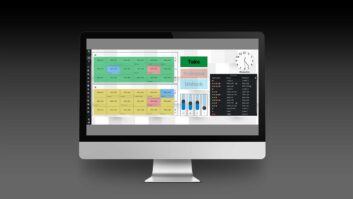
By adopting IP, users will be able to leverage the benefits of the IT industry in future broadcast infrastructure, says Nicolas Bourdon, senior vice president marketing, EVS
One of the reasons IBC is always so exciting is because of the nature of the industry it represents. Broadcast technology is constantly changing and we love to see what our partners, clients and even competitors are working on. Each show brings something different and it’s important to us that we’re at the forefront of innovation to enable our customers to produce better content.
There’s obviously still a lot of talk about 4K but I think this year’s show brings us to a point where production infrastructures and workflows are ready for the new resolution. We’re waiting for the TV manufacturers and the broadcasters themselves to decide that it’s time to begin broadcasting in 4K.
As this is implemented however, infrastructures need to make sure they keep up with new resolutions and further IP adoption is going to be the enabler of this. IP has been a core component of production workflows for a long time both as the basis of file-based operations and for helping productions collaborate better.
By adopting IP either through a soft, hybrid approach or by an entire end-to-end solution installation, users will be able to better leverage the benefits of the IT industry in the future of broadcast infrastructure. With our IP-ready products, we hope to be able to guide both visitors to IBC and the wider industry on the best practice for migrating to an IP future.
A key trend in the industry that fits into an IP future is the further development of remote production solutions. We know that interest in creating a production infrastructure that takes advantage of this idea is popular.
For example, Gearhouse Broadcast has recently developed a remote production solution because of a high number of customer requests. Its solution uses EVS’ IT-based DYVI switcher to cut together signals from HD cameras carried through 10Gbit fibre. It also remotely carried audio and comms signals. The use of DYVI in this way really is going to have a huge impact in broadcast workflows and we’re excited about being an integral part of it.
Another trend that we, and our partners, are focussing on is the distribution of multimedia content to mobile devices. As more rights holders are understanding the importance of an engaged audience, we’re expecting multimedia distribution and – by association, our C-Cast technology – to become as much of a key component of sports broadcast infrastructures as is our XT3 live production server.
For example, the past six months have seen two big projects using this technology incredibly successfully. At the SEA Games held in June this year, a cloud-based infrastructure based around C-Cast delivered content to the first ever second-screen app for a multi-sport tournament.
The application – designed by Netco Sports – gave users the ability to view live camera feeds, choose their own camera angles and watch game highlights and near-live replays. C-Cast delivered over 8000 clips to the application which generated more than 37 million user sessions – proving that this is the kind of engagement consumers want.
C-Cast was also a star of the FA Cup Final at Wembley in May. We worked with Wembley Stadium’s lead partner EE to deliver live replays and highlights over Europe’s fastest 4G network to mobile devices around the stadium. The application, designed by Intellicore, received content from the BBC’s host broadcast feed and successfully enriched the match-day experience of its users.
Our industry, as it always does, has many things that are constantly developing and making workflows and infrastructures quicker, easier to manage, more cost effective and efficient in their output. We’re looking forward to continuing to lead the technology in the industry.







